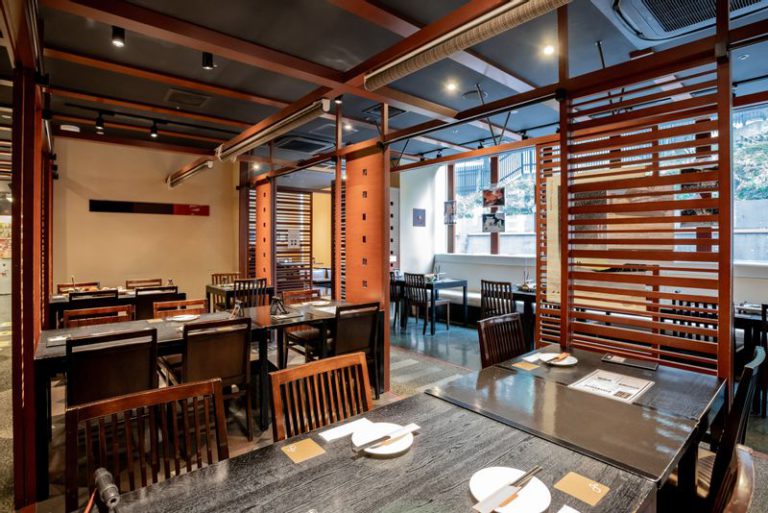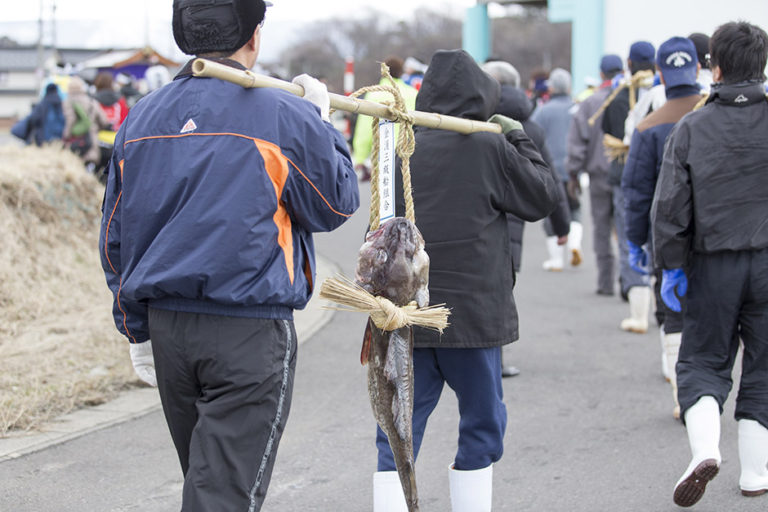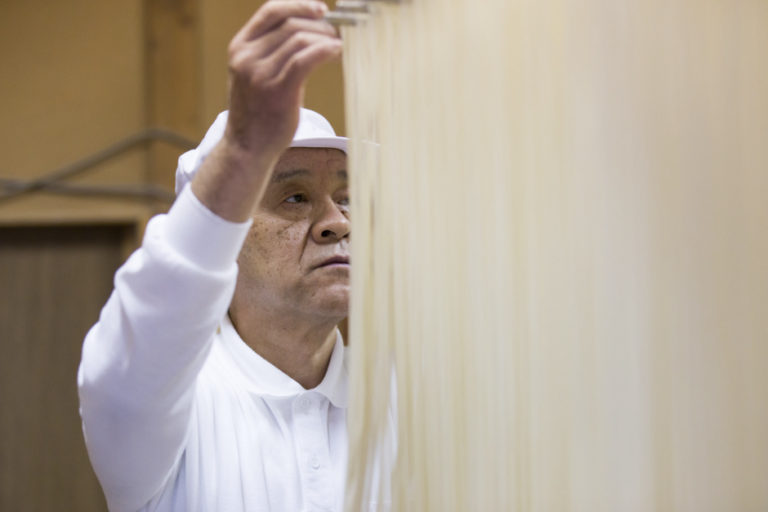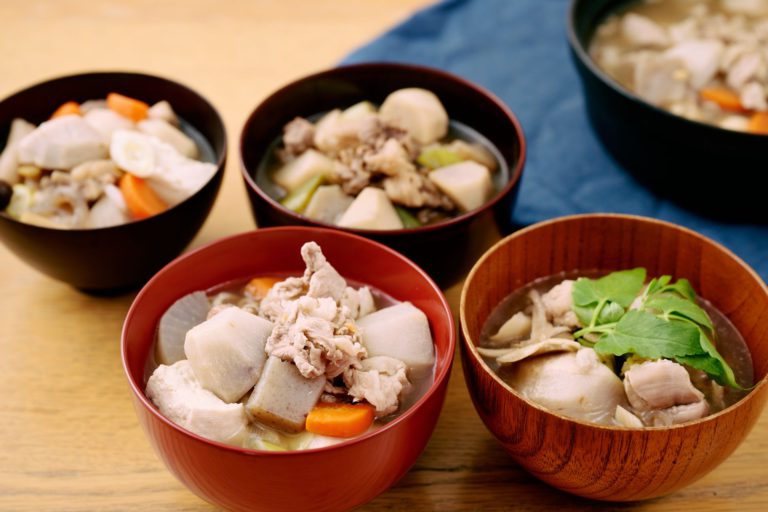A Feast of Fragrance: Akita Prefecture’s Kiritanpo Hot Pot
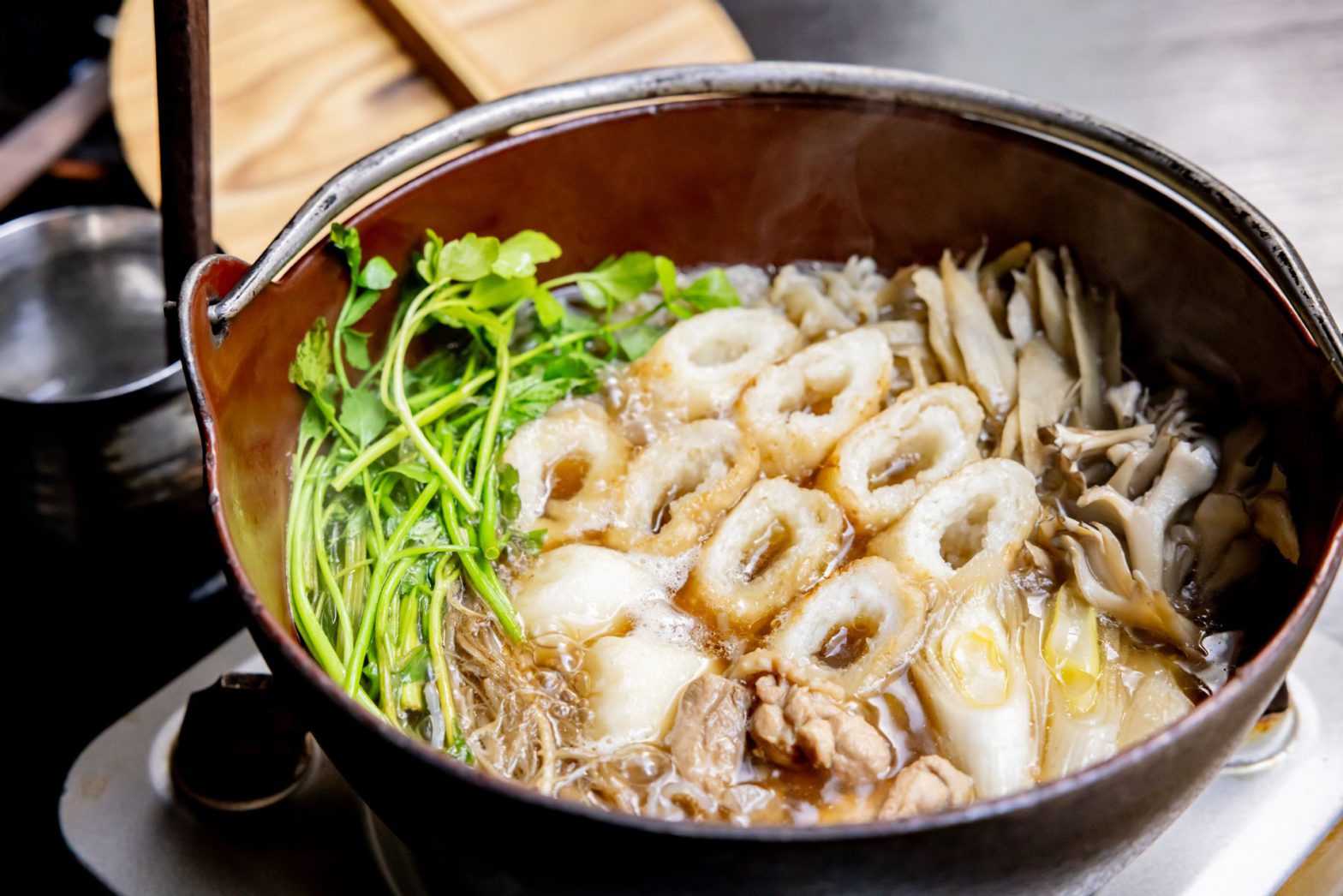
The Origins of Kiritanpo, a Specialty Born up North

There are different stories about the origin of kiritanpo. One of them mentions the Matagi, a group of hunters from the northeast Japan and Hokkaido areas who used traditional hunting methods and worshipped the mountains. It is said that they would wrap the leftover rice they carried around to eat on a hunt around sticks and roast it. Another story suggests that kiritanpo was preserved food for lumberjacks who would heat it up over a fire when they worked in the mountains. No matter which story is true, kiritanpo served as a valuable source of nutrition that supported the people working in the steep mountains of the north, and it was a way to make stale rice taste good again.
On a side note, kiritanpo also has many stories behind its name. There’s a theory that it’s come to be called “tanpo,” meaning “short head,” due to its likeness to the cattail head. A different theory says that the dish owes its name to the resemblance to a spear cover, which was also referred to as “tanpo.” And “kiri” means “cut,” so “kiritanpo” means cut “tanpo.”
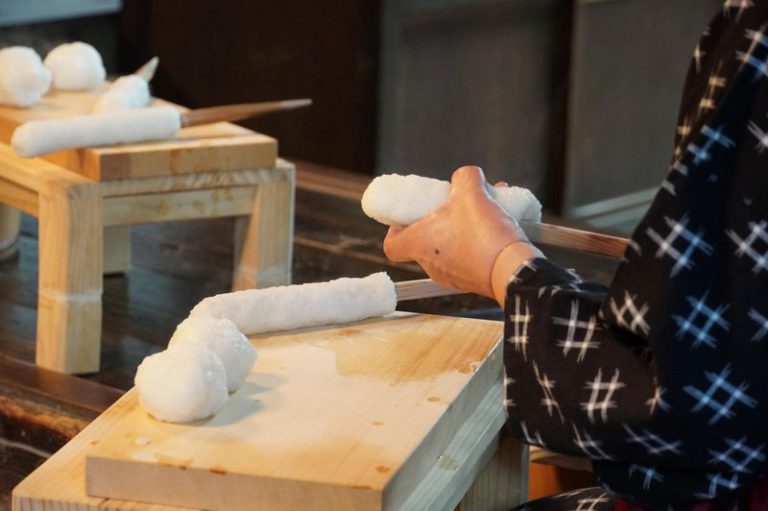
Kiritanpo is simple to make. You just have to roughly mash steamed rice, wrap it around a skewer, roast it over a fire in the hearth until browned, and voilà! The rice is half-mashed in a mortar, leaving some whole grains.
Kiritanpo is a local dish of the inland areas in the northern part of the prefecture, mainly Odate and Kazuno.
Fermentation Culture and Kiritanpo Brought About by the Climate and Natural Features of Akita Prefecture

Akita Prefecture is actually one of the leading rice-producing areas in Japan. The Yoneshiro River in the north, the Omono River in the south, and the Koyoshi River in the central part of the prefecture provide abundant water. There’s a difference between the daytime and nighttime temperatures, which is essential for growing rice, and the Ou Mountain range blocks the easterly winds blowing from the Pacific known as “Yamase,” preventing cold damage.
Among many popular rice varieties developed in this area, the Akitakomachi brand celebrated its 40th anniversary last year, and the renowned Sakihokore variety, which debuted in 2022, was dubbed a masterpiece.
When it comes to soy sauce and miso paste, we can’t forget to mention Akita Prefecture’s fermentation culture. Due to snowy winters, people had to think of ways to stock up on food for the colder months, and fermented foods that could be preserved for a long time came to be invaluable. The leftover rice was used to make rice malt called “koji” and bran, which were then used for making soy sauce, sake, and miso paste. Taking advantage of the fact that Akita is a rice-producing region, the local miso uses a higher amount of rice malt than usual. Because of that, it’s often referred to as “luxurious miso.”
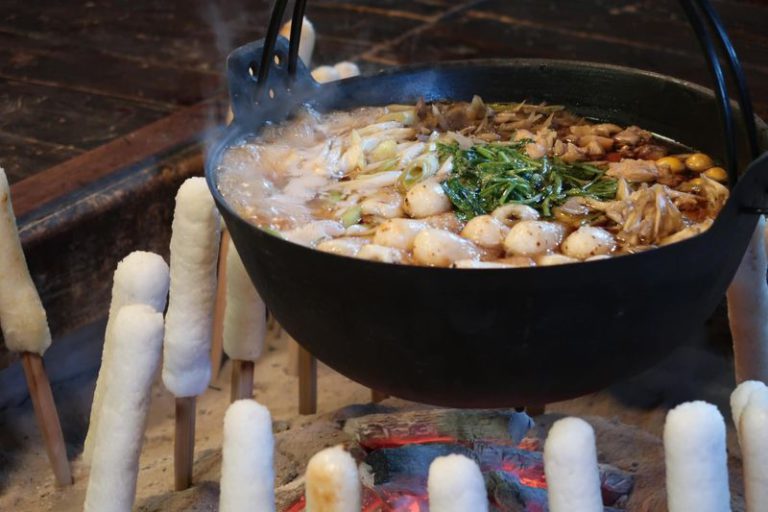
The standard way to eat kiritanpo is to add it to a soy sauce-based broth. The dish is called “kiritanpo hot pot.” Aside from that, depending on the area and shop, kiritanpo are eaten grilled with soy sauce or Akita miso and called “yakitanpo,” meaning “grilled tanpo.” The shape may be unique, but considering the way it’s served in a broth, or with soy sauce or miso, it has a familiar taste to Japanese people, and it doesn’t differ much from the common dishes with rice.
Savoring a Fragrant Hot Pot in Akita Bisaikan
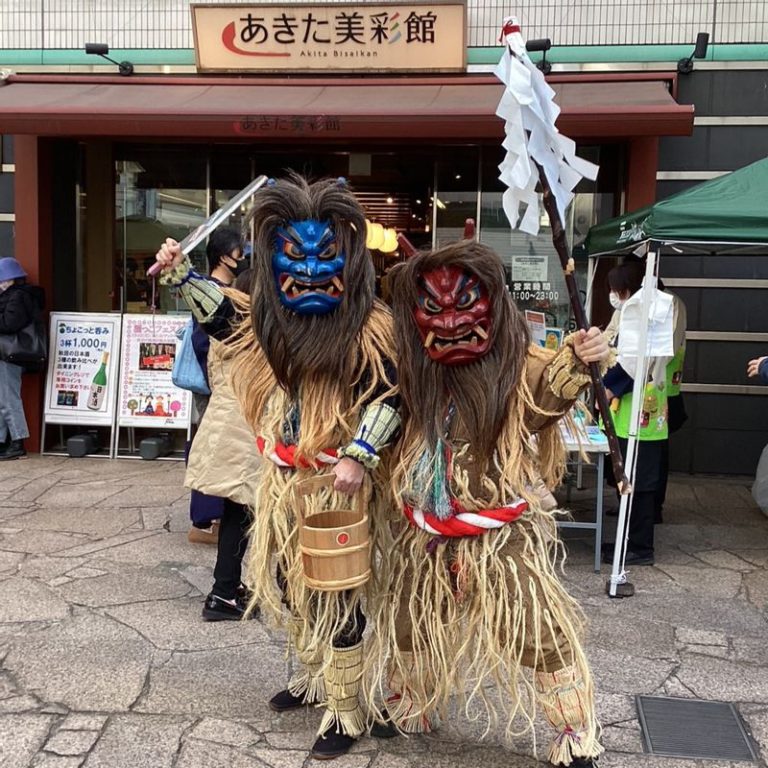
Akita Bisaikan is a specialty store located in Shinagawa in Tokyo selling Akita Prefecture’s specialties and serving dishes such as kiritanpo hot pot. The store allows customers to experience the charms of Akita by holding Akita dog-petting events several times a year and the monthly appearances of a person dressed as a Namahage demon who prowls around the place.
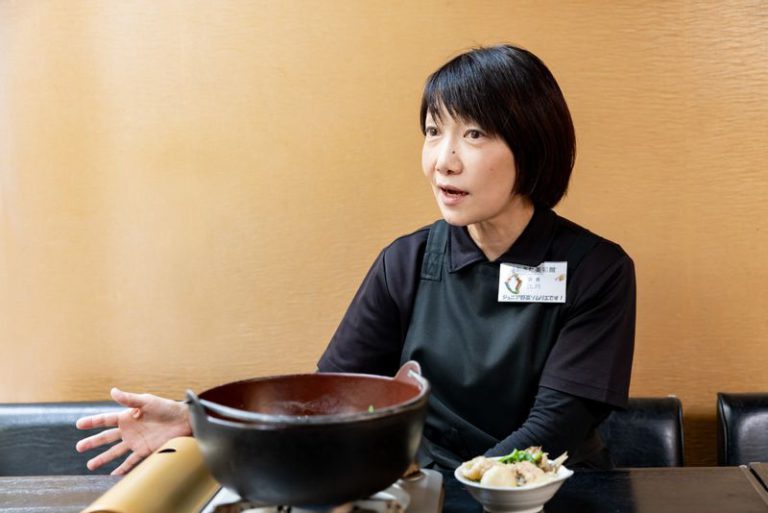
“Kiritanpo hot pot is the most popular dish at our store. Some customers like to order Inaniwa Udon noodles or sandfish grilled with salt,” says the store manager, Katsuko Egawa.
When we asked Ms. Egawa for a basic recipe for kiritanpo hot pot, she shared a surprising tidbit: “In fact, there are only a few, carefully selected ingredients that can go into traditional kiritanpo hot pot.”
One of the best things about hot pot dishes is their versatility and that you can use up whatever you have on hand. Kiritanpo hot pot, however, seems to be an exception to that rule. According to Ms. Egawa, the role of the selected ingredients is to fully bring out the flavor of kiritanpo.
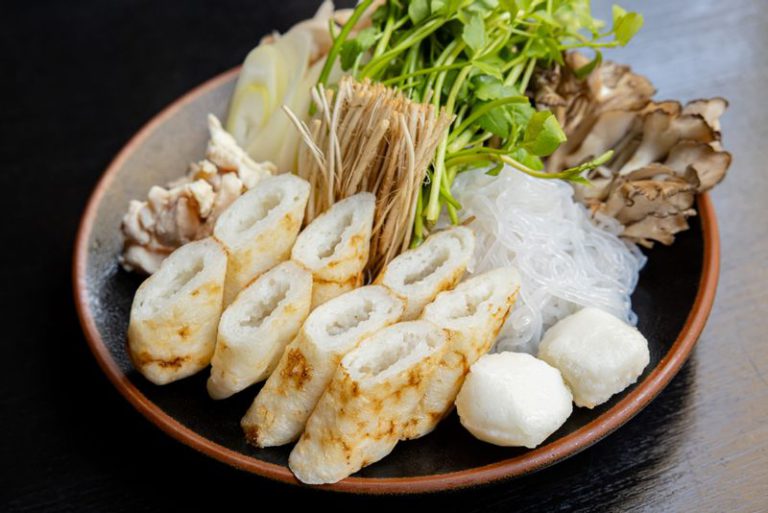
There are only seven ingredients: Japanese parsley, burdock root, maitake mushrooms, scallions, konjac noodles, chicken, and last but not least, kiritanpo. The broth is made with Hinai Jidori chicken bones and seasoned heavily with soy sauce, sake, and mirin.
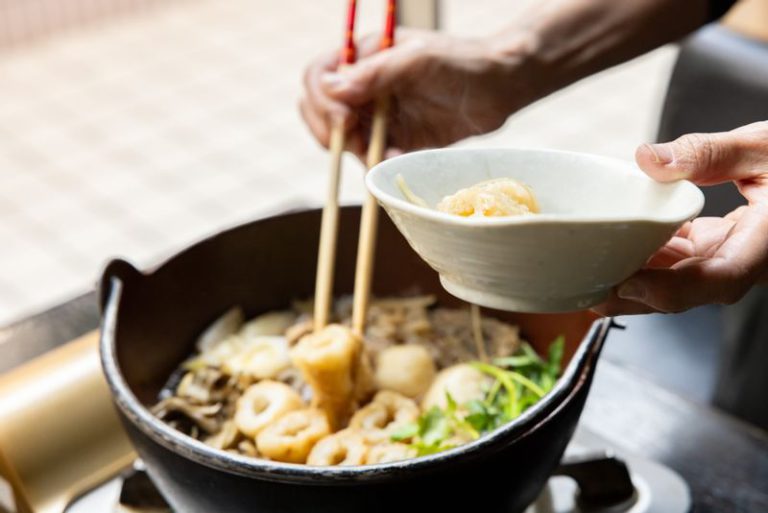
Ms. Egawa says that the mouth-watering smell of kiritanpo hot pot is just as good as the taste. Given that it uses Japanese parsley, burdock root, and maitake mushrooms that are often enjoyed for their aroma, we can’t agree with her more. Since kiritanpo hot pot uses so many fragrant ingredients, some people apparently refer to it as a “fragrant hot pot.”
Among all the ingredients, Japanese parsley is vital to kiritanpo hot pot. Akita Bisaikan uses Mitsuseki parsley, which is grown in the Mitsuseki district of Yuzawa in Akita Prefecture and has excellent color, aroma, and taste. Fans of Japanese parsley may already be aware of it, but one of the great things about it is that its roots are edible. The roots of Mitsuseki parsley are exceptionally long and aromatic. They can be made into delicious tempura or blanched and served with soy sauce.
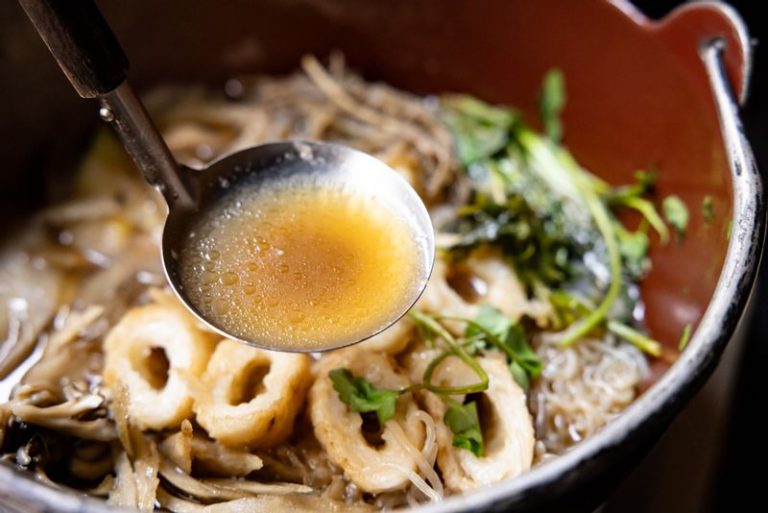
As for the broth and meat, Akita Bisaikan uses Hinai Jidori, one of Japan’s three most delicious chickens. Hinai Jidori is a well-known specialty of Akita, highly regarded for having plenty of dark meat, firm texture, rich taste, and somewhat gamy aroma.
Before saying goodbye to Ms. Egawa, we asked her if there’s any easy way to recreate kiritanpo hot pot at home.
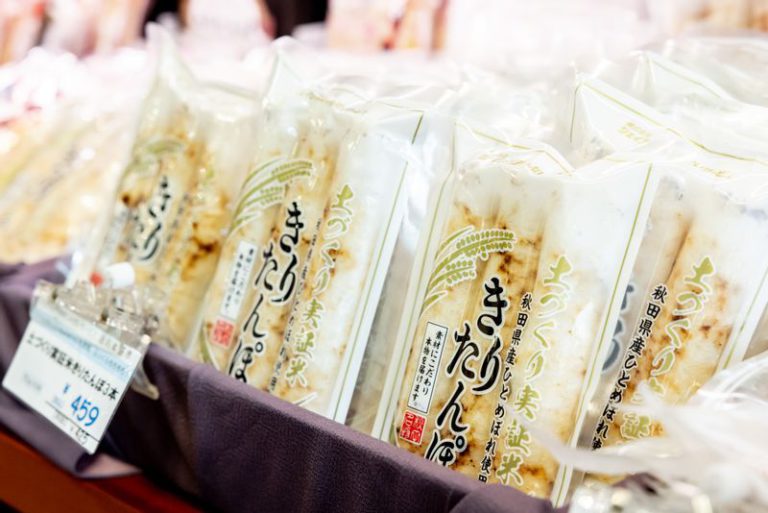
“First of all, I recommend using the ready-made Hinai Jidori broth that’s available in stores. If the Japanese parsley is out of season, you can replace it with potherb mustard. Before adding the store-bought kiritanpo to the pot, you can microwave them for one minute to make them fluffy. Kiritanpo tends to absorb the broth and fall apart, so I’d suggest adding them in right before eating.”
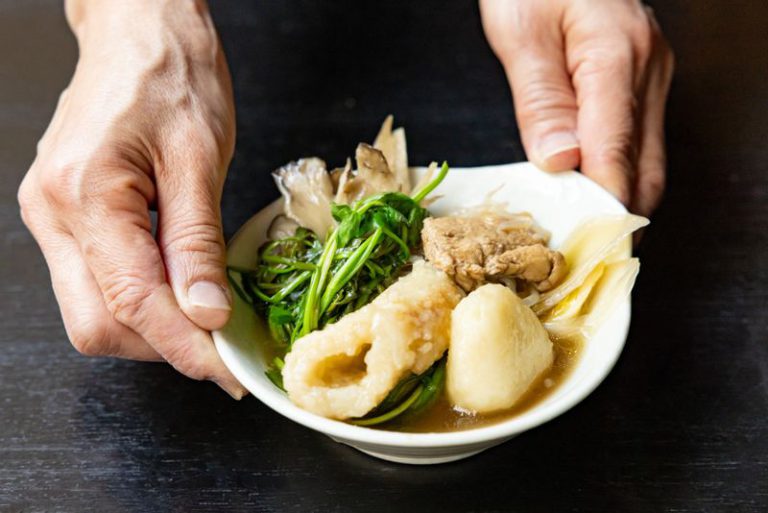
As we kept listening to Ms. Egawa and tasting the delicacies of Akita Prefecture, we grew more and more convinced that kiritanpo hot pot is a gem that represents the cuisine of that region. It’s a deeply rooted dish with an indulgent aroma that I encourage everyone to try.
Cooperation: Tokyo Office of Akita Prefecture


